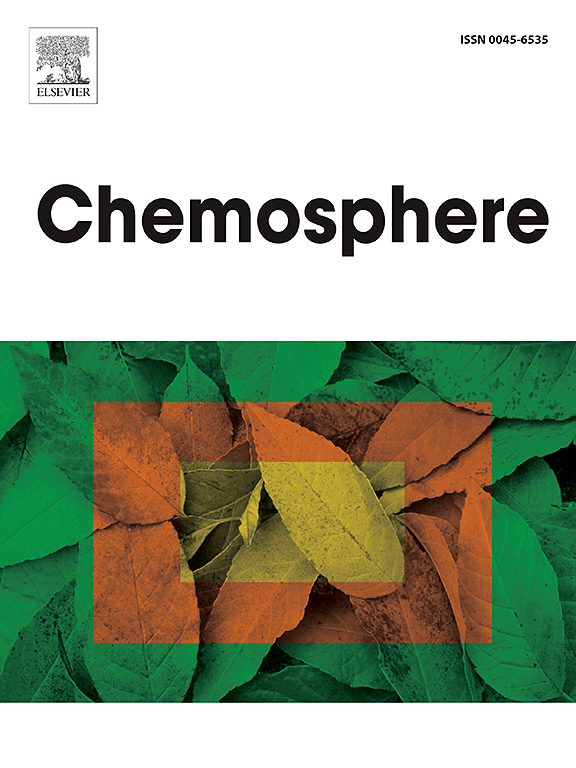Interaction of the Gardanne Bayer effluent with seawater (Mediterranean Sea): Influence on the trace metals behaviour
IF 8.1
2区 环境科学与生态学
Q1 ENVIRONMENTAL SCIENCES
引用次数: 0
Abstract
In the global effort to evaluating the environmental consequences of deep-sea tailing placement, our study focused on understanding the formation of hydrotalcite concretions at the outfall of the Gardanne effluent into the Mediterranean. Through a combination of in situ sampling and laboratory experiments, we explored the interaction between the clarified Bayer effluent and seawater. Our results indicated that, when mixed with seawater, 1 L of effluent can form 20–25 g of (wet) particles. Hydrotalcite formation proved effective in removing metals and metalloids such as Al, Co, Pb, As, Ni, Cu and Ti from the effluent. In contrast, Cr and V were either partially removed or remained in the dissolved phase. Anomalies in Al and As concentrations within the plume at sea further supported their active removal. While hydrotalcite's capacity for contaminant removal is significant, its non-stability in seawater suggested that these particles will dissolve or evolve in the water column beyond the plume, raising concerns about their long-term environmental impact. The fate of the columns of concretion formed at the outfall remains also a central concern, especially given that since 2019, the plant has reduced both the alkalinity and Al concentrations in its discharges to ensure compliance with environmental regulation.

Gardanne Bayer废水与海水(地中海)的相互作用:对微量金属行为的影响
在评估深海尾矿安置对环境的影响的全球努力中,我们的研究重点是了解加尔达纳污水流入地中海的出口处水滑石凝结物的形成。通过现场取样和实验室实验相结合,我们探索了澄清后的拜耳废水与海水之间的相互作用。我们的研究结果表明,当与海水混合时,1 L的出水可以形成20-25 g的(湿)颗粒。水滑石的形成对出水中的Al、Co、Pb、as、Ni、Cu和Ti等金属和类金属具有较好的去除效果。相反,Cr和V被部分去除或留在溶解相中。海上烟羽中Al和As浓度的异常进一步支持了它们的主动清除。虽然水滑石去除污染物的能力是显著的,但它在海水中的不稳定性表明,这些颗粒将在烟柱以外的水柱中溶解或演化,这引起了人们对其长期环境影响的担忧。在排放口形成的混凝土柱的命运仍然是一个核心问题,特别是考虑到自2019年以来,该工厂已经降低了排放物中的碱度和铝浓度,以确保符合环境法规。
本文章由计算机程序翻译,如有差异,请以英文原文为准。
求助全文
约1分钟内获得全文
求助全文
来源期刊

Chemosphere
环境科学-环境科学
CiteScore
15.80
自引率
8.00%
发文量
4975
审稿时长
3.4 months
期刊介绍:
Chemosphere, being an international multidisciplinary journal, is dedicated to publishing original communications and review articles on chemicals in the environment. The scope covers a wide range of topics, including the identification, quantification, behavior, fate, toxicology, treatment, and remediation of chemicals in the bio-, hydro-, litho-, and atmosphere, ensuring the broad dissemination of research in this field.
 求助内容:
求助内容: 应助结果提醒方式:
应助结果提醒方式:


